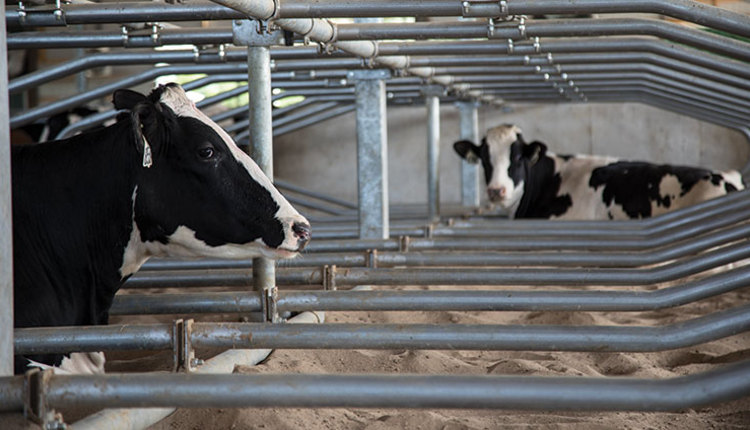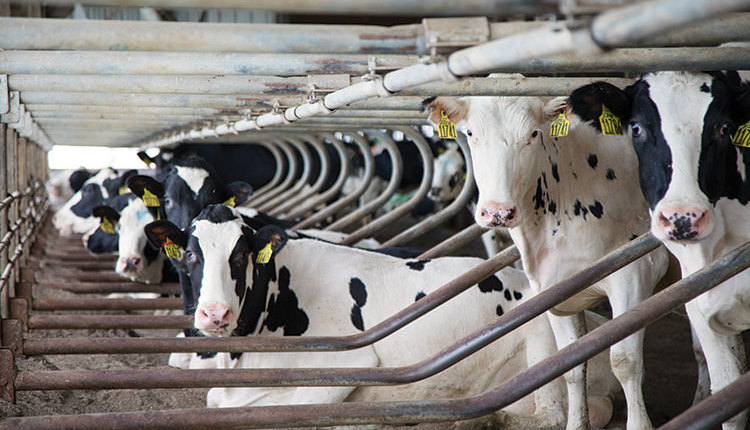The author is a large-herd veterinarian based in Jerome, Idaho.
If you can't beat them, join them. Rather than tearing your hair out trying to rid your farm of pest birds and rodents, why not invite predator birds in to help you do the job?
In an article on page 379 of the May 25, 2013, issue of Hoard's Dairyman, I discussed the benefits of placing nesting boxes for kestrels and barn owls on farms to help eliminate other pests. We constructed a nesting box of our own, and before long our visitors arrived.
Home sweet home
If the proof of the pudding is in the eating, then the measure of the success of placing an owl nesting box is the production of a brood of owlets.
After we'd constructed and placed an owl nesting box on our farm, we noted that it was being used by barn owls. We learned of a local researcher who studies barn owls, Jim Belthoff, who is head of the Barn Owl Research Team in the Raptor Biology Program at Boise State University. Recently, he and his graduate students came to our farm and checked our box for evidence of nesting success.
After first blocking the entrance of the box to prevent the escape and injury of any young owls, graduate student Tempe Regan climbed 12 feet up a ladder and carefully opened the box's cleaning door and peered inside.
"I see at least three owlets," she announced. She reached in and gently caught a baby owl by the legs and brought it out into the daylight. Its appearance was a mixture of cute and horrific; covered with eider-like down, its heart-shaped face with a vulture-like beak and beady eyes was uncomfortably skull-like. But beauty is in the eye of the beholder, and much like the ugly duckling of Anderson's tale, this baby will eventually mature into an adult barn owl of great beauty.
The owlet was quickly placed into a pillowcase to reduce its struggling and brought to a work station on the ground. A federal bird band was first attached to its leg, and then numerous measurements were made of body parts such as bill length and tail feathers. After a final weighing on a scale, it was pronounced a healthy, fine specimen and returned to join its clutch mates in the sack.
All in the family
A total of five owlets were measured and banded. "Average clutch size for this area is about six," Tempe said. "We've found broods as large as 10. This year should be a good one for reproduction, as there seem to be a lot of rodents." Barn owls feed mostly on small rodents, such as voles and mice, but will also take birds, such as starlings.
I asked her if they were doing any toxicology on the owls. "We have not found any evidence of pesticides," she said, "but are concerned about rodenticides." Secondary poisoning of prey birds that consume rodents that have ingested rodenticides should be kept in mind should you wish to encourage the presence of predatory birds such as kestrels and barn owls on your farm.
The owl research team plans to return to our farm later this year to place a transmitter on the mother owl and then track her hunting behavior.
The nesting box on our farm may produce two broods of owlets this season. The owlets that were just banded will fledge in another month and begin hunting for prey on their own. Look out voles and starlings!
This article appears on page 706 of the October 25, 2014 issue of Hoard's Dairyman.
If you can't beat them, join them. Rather than tearing your hair out trying to rid your farm of pest birds and rodents, why not invite predator birds in to help you do the job?
In an article on page 379 of the May 25, 2013, issue of Hoard's Dairyman, I discussed the benefits of placing nesting boxes for kestrels and barn owls on farms to help eliminate other pests. We constructed a nesting box of our own, and before long our visitors arrived.
Home sweet home
If the proof of the pudding is in the eating, then the measure of the success of placing an owl nesting box is the production of a brood of owlets.
After we'd constructed and placed an owl nesting box on our farm, we noted that it was being used by barn owls. We learned of a local researcher who studies barn owls, Jim Belthoff, who is head of the Barn Owl Research Team in the Raptor Biology Program at Boise State University. Recently, he and his graduate students came to our farm and checked our box for evidence of nesting success.
After first blocking the entrance of the box to prevent the escape and injury of any young owls, graduate student Tempe Regan climbed 12 feet up a ladder and carefully opened the box's cleaning door and peered inside.
"I see at least three owlets," she announced. She reached in and gently caught a baby owl by the legs and brought it out into the daylight. Its appearance was a mixture of cute and horrific; covered with eider-like down, its heart-shaped face with a vulture-like beak and beady eyes was uncomfortably skull-like. But beauty is in the eye of the beholder, and much like the ugly duckling of Anderson's tale, this baby will eventually mature into an adult barn owl of great beauty.
The owlet was quickly placed into a pillowcase to reduce its struggling and brought to a work station on the ground. A federal bird band was first attached to its leg, and then numerous measurements were made of body parts such as bill length and tail feathers. After a final weighing on a scale, it was pronounced a healthy, fine specimen and returned to join its clutch mates in the sack.
All in the family
A total of five owlets were measured and banded. "Average clutch size for this area is about six," Tempe said. "We've found broods as large as 10. This year should be a good one for reproduction, as there seem to be a lot of rodents." Barn owls feed mostly on small rodents, such as voles and mice, but will also take birds, such as starlings.
I asked her if they were doing any toxicology on the owls. "We have not found any evidence of pesticides," she said, "but are concerned about rodenticides." Secondary poisoning of prey birds that consume rodents that have ingested rodenticides should be kept in mind should you wish to encourage the presence of predatory birds such as kestrels and barn owls on your farm.
The owl research team plans to return to our farm later this year to place a transmitter on the mother owl and then track her hunting behavior.
The nesting box on our farm may produce two broods of owlets this season. The owlets that were just banded will fledge in another month and begin hunting for prey on their own. Look out voles and starlings!








